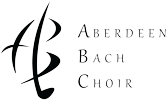In this chorus, which includes the trumpets for the first time, and which concludes the recounting of the nativity, Handel’s genius truly comes through. We can see his experience as a composer of dramatic opera clearly in the music as he combines and integrates three separate musical ideas whilst simultaneously isolating and highlighting three separate concepts and actions from the text. Firstly, the music portrays the physical location of the angels as they change from hovering overhead to coming down to ground level – this is heard in the strings as the pitch falls in a musical fluttering of strings, and an ostinato˚ at a much lower pitch, which is used to accompany the words ‘and peace on earth’. Secondly, the setting of the words ‘peace on earth’, is still and serene, always dropping an octave, assuaging the earlier fear of the shepherds. Finally, the imitative way in which the words ‘goodwill to men’ are set, with all four parts imitating one another in quick succession – literally passing the good news from one to another. The final few bars of the movement see the angels disappear from the earth in a brief coda for strings, a final high trill being one last, disappearing flutter of wings. The movement is in the key of D Major to suit the home key of natural (valveless) Baroque trumpets; in this key they are at their most strident, most versatile and most powerful. |
|
Chorus Luke II, v 14 |
Glory to God in the highest, and [on earth] peace on earth, good will toward men. |
The focus of the work in Scene 5 now turns to Christ’s redemptive miracles on earth. Although this aria for soprano has an ABA structure it is not in a strict Baroque da capo˚ form. The A section is forthright, bold and strong, with the word ‘Rejoice’ usually set to a florid melisma, and the word ‘shout’ given appropriate distinction. The middle section, which focuses on a message of peace, is naturally more serene, and both the momentum and the harmonic pulse˚ slow down, with the use of pedal, and gaps between repetitions of the word ‘peace’. Following this, a more elaborate version of the opening section returns. |
|
Aria Soprano Zechariah IX, vv 9-10 |
Rejoice greatly O daughter of Zion, shout, O daughter of Jerusalem, behold thy king cometh unto thee. [He is the righteous saviour] And he shall speak peace unto the heathen. |
This simple secco recitative deals efficiently with the text. The first three short phrases rise sequentially, as if Handel is portraying a sense of growing amazement at the miracles alluded to. |
|
Recitative Counter Tenor Isaiah XXXV, vv 5-6 |
Then shall the eyes of the blind be opened, and the ears of the deaf unstopped. Then shall the lame man leap as an hart, and the tongue of the dumb shall sing. |
This aria is the only part of the work where the text speaks directly about Christ and his mortal life on earth. It begins with the counter tenor and then the music passes to the soprano. The style of the music is very similar to the ‘Pifa’ with the same 12/8 time signature, similar rhythmic patterns, melodic phrases based on passages of parallel thirds and the presence of sustained pedal notes. The word setting is mostly syllabic˚, and the lilting 12/8 time signature and moderato tempo give scope for gentle phrases of reassurance. The section given to the soprano is almost identical to that of the counter tenor, but a perfect 4th higher in pitch. |
|
Aria Counter Tenor & Soprano Isaiah XL, v 11 Matthew XI, vv 28-29 |
He shall feed his flock like a shepherd, and he shall gather the lambs with his arm and carry them in his bosom and [shall] gently lead those that are with young. Come unto him [me] all ye that labour that are heavy laden, and he [I] will give you rest. Take his [my] yoke upon you and learn of him [me]; for he is [I am] meek and lowly of [in] heart; and ye shall find rest unto your souls. |
This short, dance-like, fugal chorus, which ends Part 1, begins quickly with the subject in the sopranos, passing in turn to tenors, altos and basses. The texture is always choral and ranges from two to mostly three and four parts, growing increasingly dense as the movement progresses. The subject and countersubject from this chorus are also parodied from the Duetto di Camera ‘Quel fior che all’alba ride’ (‘The flower that laughs when day breaks’, HWV 192). The subject has an interesting rhythmic quirk of a dotted semiquaver and demi-semiquaver, where one might expect notes of equal value. The words are repeated frequently in this chorus, but Handel ignores the word ‘and’ until the very final repetition of them – as if to add one final degree of emphasis. |
|
Chorus Matthew XI, v 30 |
[For my] His yoke is easy, and his [my] burthen is light. |
Aberdeen Bach Choir
Scottish Registered Charity Number SC008609


























